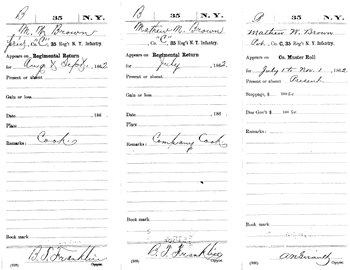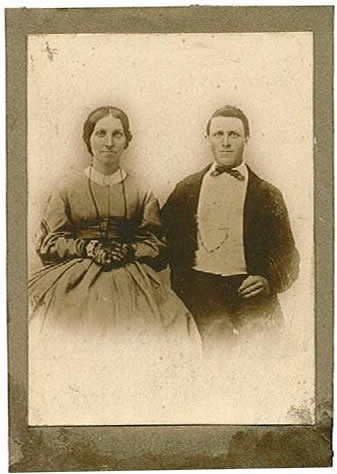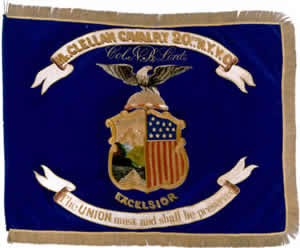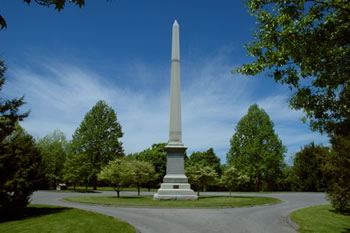Private soldiers
30 December 2007
Every so often I hear from descendants of soldiers who were at Sharpsburg in September 1862. Many ask why their ancestor is not already among those profiled on Antietam on the Web.
Well, the obvious–if selfish–answer is that it’s taken me about 12 years to get to approximately 1100 individuals. That these are something fewer than 1% of all those present on the Maryland Campaign suggests I may not have enough lifetime to get to them all.

unidentified Connecticut Sergeant (coll. Andy de Cusati)
The main reason I don’t have anything online about the vast majority of the troops is that I don’t know about them. To date I’ve been working through the senior officers, men commanding regiments and batteries, and “celebrities” like Medal of Honor recipients, post-War memoirists, prominent local civilians, and others who stood out from the crowd during and after the War. By definition these include very few of the ordinary soldiers who were the bulk of the participants.
I’ve been considering lately how I might import information about large numbers of soldiers in batches, but worry about introducing inaccuracies as a result. I know some units are well documented digitally (thanks to people like Steve Soper and Jim Studnicki, for example), but such information is not universally available. Date-specific rosters or muster reports are particularly spotty for Confederate units, which would make an apparent Federal bias in our database even worse.
I would still like to get more of the troops’ names and lives online, but don’t yet have a practical means. I’ll pick away at this problem as I can.
In the meantime, though, I’m taking advantage of the same family members who ask about their soldiers. Most have been very knowledgeable, and extremely generous in sharing with Antietam on the Web. Let me tell you about two such cases that came in just before Christmas …
Thanks to Great-great Grandson Doug Lane we’ve now got at least a basic entry for Mathew W. Brown, Private, 35th New York Volunteer Infantry at Antietam, and later trooper of the 20th New York Cavalry.


Consolidated Service Record (excerpt), MW Brown (Archives, courtesy D. Lane)
Mathew was born 1 August 1839 in Kingston, Ontario, Canada. Kingston is about 30 miles west and across the Saint Lawrence from Theresa, New York, where Company C of the 35th Infantry Regiment was recruited in April and May of 1861. The company, along with new Private Brown, in charge of Captain George W Flower*, was accepted 15 May and mustered in with the Regiment at Elmira on 9 July.
The 35th, under the command of Colonel William C. Brown, mustered into Federal service for two years and soon left the State for Washington. In August Major Newton Lord was made Colonel, and the regiment remained in garrison, camped near Falls Church, Virginia through the Winter of 1861-62. That Spring they were in the “movement” toward Manassas, and operated under Pope near Falmouth. They first saw action in August 1862 at Gainesville, then at Second Bull Run.
They were on South Mountain, and in combat again at Antietam. There they were part of the initial attack of Hooker’s First Corps down the Hagerstown Pike, the 35th in terrific combat near the West Woods that frightful morning; Company cook Mathew Brown surely among them.
In December they were with the Army of the Potomac at the debacle that was Fredericksburg, then on provost and other guard duty on the fringes of the Army until their term of service expired in May 1863.

Mathew William and Anna Frances Bacon Brown (c. 1863, coll. of Doug Lane)
Along with the rest of the regiment’s original veterans, Mathew mustered out of the 35th in June 1863 and went home. He married Anna Frances Bacon the next month, on 5 July, and just over a month after that was back in service having enlisted on 21 August in Company G of the newly forming 20th New York Volunteer Cavalry regiment. The 20th was raised and commanded by the troubled Colonel Lord under whom Brown had campaigned in the 35th Infantry.
Recruiting through that summer, all companies of the 20th Cavalry was fully manned and mustered into service at Sackett’s Harbor for a three year term by 30 September 1863. The regiment was based in the defenses at Portsmouth, Virginia through December 1864, and “in front of” Petersburg and Richmond to April 1865.
During that period the Regiment participated on two brief forays into North Carolina (August and October 1864). Company G–presumably with Corporal Brown–was detached in March 1865 to the 1st Brigade, Mackenzie‘s Division, and was active on the Appomattox Campaign.

Standard of the 20th NY Vol Cavalry (NYSMM)
Following final duty in Virginia, Corporal Mathew W Brown mustered out of the regiment at Manchester (now part of Richmond), Virginia on 31 July 1865, the War over for him at last.
Speaking on Mathew Brown’s personal life, Mr Lane writes:
It appears that [the photo above] may be their wedding picture, although I am not sure about that. I got the photo from a woman who is also a descendant of him. I do not know much about his life. At least not yet. He and his wife moved to Kewaunee County, Wisconsin after the war and started their family. His obituary said he was a night watchman on the harbor pier in Sheboygan Wis. His body was found in the lake several days after he was reported missing. He drowned. Sheboygan is located on Lake Michigan. Ironically, on Aug. 4, 1881 he applied for his Military Pension. Two months later he died.
Immediately after we learned of Private Brown, Jim Buchanan sent us great information about his Great-Grandfather Issac McBride.


History of Pennsylvania volunteers (excerpt, MoA)
McBride was born in Philadelphia in 1832, and was 28 years old when he enrolled as Captain, Company F, 72nd Pennsylvania Infantry in August 1861. The 72nd Infantry were known as Baxter’s Fire Zouaves, one of 4 regiments making up the Philadelphia–formerly “California”–Brigade. Many of the troops had been recruited from the city’s fire companies. Soon after entering service the regiment was increased to 15 (rather than the usual 10) companies and had nearly 1600 men on the rolls. Their uniforms were of the flamboyant French Zouave pattern.


Philadelphia recruiting poster (c.1862-65, Temple U.)
Except for a period recruiting for the Regiment at Philadelphia from February through April 1862, the Captain was listed present with the unit from its organization through the battle of Antietam.
Their first six months of service were spent in Washington and along the upper Potomac River. They first saw action at the battle of Ball’s Bluff in October 1861, where the “father” of the Brigade, Senator Edward D Baker was killed. In March 1862 they joined the AoP on the Peninsular Campaign, fighting at Fair Oaks, on the Seven Days, and at Malvern Hill before returning to northern Virginia to “cover Pope’s retreat”.
On the Maryland Campaign of September 1862, though too late at Turner’s Gap to be engaged on the 14th, the 72nd was more than compensated by ferocious action as the advance of the Federal Second Corps entered the West Woods near the Dunkard Church on the morning of the 17th. It was likely at that point that Captain McBride was shot “through the [left] knee-joint”: the wound that would end his War.
He was initially treated and began recovery in the hospital at Smoketown, Maryland, near the battlefield…
Those who did not die on the battlefields often died later in hospitals from their injuries or from illnesses. Homes, barns or churches close to the battlefields, like Smoketown and Locust Spring / Big Spring near the Antietam battlefield, were pressed into service. After the battle about seventy-five field hospitals were established in the surrounding area. The Smoketown Hospital, for example, was described as a collection of 80 tents, an oak grove and two dilapidated cabins. When Dr W. R. Mosley, Assistant Medical Inspector, visited the hospital in November 1862 there were 479 patients under treatment, 232 were wounded soldiers, 237 were sick. Typhoid fever, dysentery and diarrhea were the most prevalent illnesses.
It is likely he continued his recovery in a Philadelphia army hospital, but by June 1863 it must have become apparent he would not recover sufficiently to return to his regiment.
He resigned his commission and was discharged on authority of a Surgeon’s Certificate of Disability on 2 June 1863.
There is little more known about Isaac McBride. He died in Philadelphia on 8 February 1896 and left a widow, Clara Kennedy McBride, according to his Federal pension application. He rests now in Mt. Moriah Cemetery.

Philadelphia Brigade Monument, Antietam (S. Recker)
_________________
Notes
The unknown Connecticut Sergeant at the top is from Andy De Cusati’s online CDV collection.
Photos and service record sheets for Mathew W Brown kindly provided by Doug Lane.
The 20th Cavalry’s standard is from the collection of the New York State Military Museum, posted online. That site is also an excellent resource for more about all New York military units, of all wars.
The Company F page snippet above is from Bates’ History of Pennsylvania Volunteers. The several volumes are online in several places. This page is from Volume 2 hosted at the fabulous MoA site.
The recruiting poster is from a history class page from Temple University.
Other information about Captain McBride from family records, Federal pension application (19 October 1893), and Philadelphia death certificate (3 March 1896) gathered and transcribed by Jim Buchanan.
The description of hospitals after Antietam is from John Nelson on the WHILBR site.
The beautiful Philadlephia Brigade Monument photo is from Stephen Recker’s comprehensive Monument Database on Virtual Antietam.
_____________________
* Grand Army of the Republic (GAR) Post #306 in the town of Theresa was named for Capt George W[alton] Flower, Co C, 35th NYV (Post active 8 Nov 1882 to 1933). Flower joined at Theresa as Captain, age 30; suffered severe concussion at Antietam and requested a disability discharge 11-5-1862; postwar mayor of Watertown NY; his brother [Roswell P.] was NY governor; died 1881 [leaving a wealthy widow]. Thanks to an online transcription on RootsWeb by Benedict R. Maryniak.
Looks like another of my guys to look into.


December 30th, 2007 at 8:26 am
How about a wiki where other people can share what they know? There are pros and cons, and you might already have thought about it and decided against it, but it’s something to consider.
December 31st, 2007 at 8:10 am
Brian,
Years ago Joe Harsh, Paul Chiles and myself began a project to identify by name as many individuals as possible who were present at Antietam. I think Paul continued working on it for a while, but I have the initial roster of names as well as the criteria we used for entrance on the list. I think the format is so old I doubt I can produce it electronically, but the printed roster ocupy space in my basement. A nice rainy day project for you?
Happy New Year!
December 31st, 2007 at 12:28 pm
Hi Gavin –
A few years ago I built some web forms and a review/approval scheme to take submissions on the site. It requires people sign-up as ‘members’, and about 100 people have done so to date. It’s proved effective on a small scale, but the sign-up part probably discourages some people from contributing.
I’ve also corresponded with hundreds of people over the years by snail and email. I really enjoy the contacts, and get high-quality stuff that way, but it requires a lot of hands-on effort to feed the AotW database. I’ll surely continue to do this, but won’t count on it for masses of data.
A wiki is a good alternative, but a free-form, wikipedia-type solution worries me. I need some kind of gate-keeping, along with quality and configuration control, but don’t have lot of free time to devote. I think you’re on the right track here, though. I’ll look into this further – opening the task to the larger world is key here. I’ll never get to it alone.
Thank you for the suggestion!
December 31st, 2007 at 12:31 pm
Tom, Tom, Tom.
It is good that my wife doesn’t usually read this blog. She’d kill me if she heard me say …
It sounds like more than one rainy day’s work, but I would very much like to take a shot at getting that roster information online somehow. I’ll send you an email, and we can talk details.
(Holy crap, what am I doing?)
January 2nd, 2008 at 12:28 am
Their uniforms were of the flamboyant French Zouave pattern.
Brian,
Don’t know if I’d go that far or not. I might classify the 72nd PA as wearing a cross between the Zouave & the Chasseur. According to Philadelphia Brigade historian Charles Banes the uniform was “far from being as showy and foreign as that of the New York Zouaves.” To me this means no Fez, Turban or really baggy pants. Banes says their pants were “cut wide, with red stripes at the side.”
He also states:
“As uniforms wore out and were replaced, the old portions were frequently given to the camp followers and officers’ servants, and, as they were to be found in all parts of the column, it sometimes appeared as if Baxter’s men were represented everywhere. It was no small satisfaction to both officers and men that, after a few months’ experience, the zouave uniform was discarded for the regulation dress.”
Great post!
Respectively,
Mike
January 2nd, 2008 at 12:39 pm
Hi Mike,
I’d read about the Chasseur jacket variation, but not the rest. And it’s probably not fair to lump ‘Zouave’ and ‘flamboyant’. Thanks for adding those great details.
Zou, zou, zou!